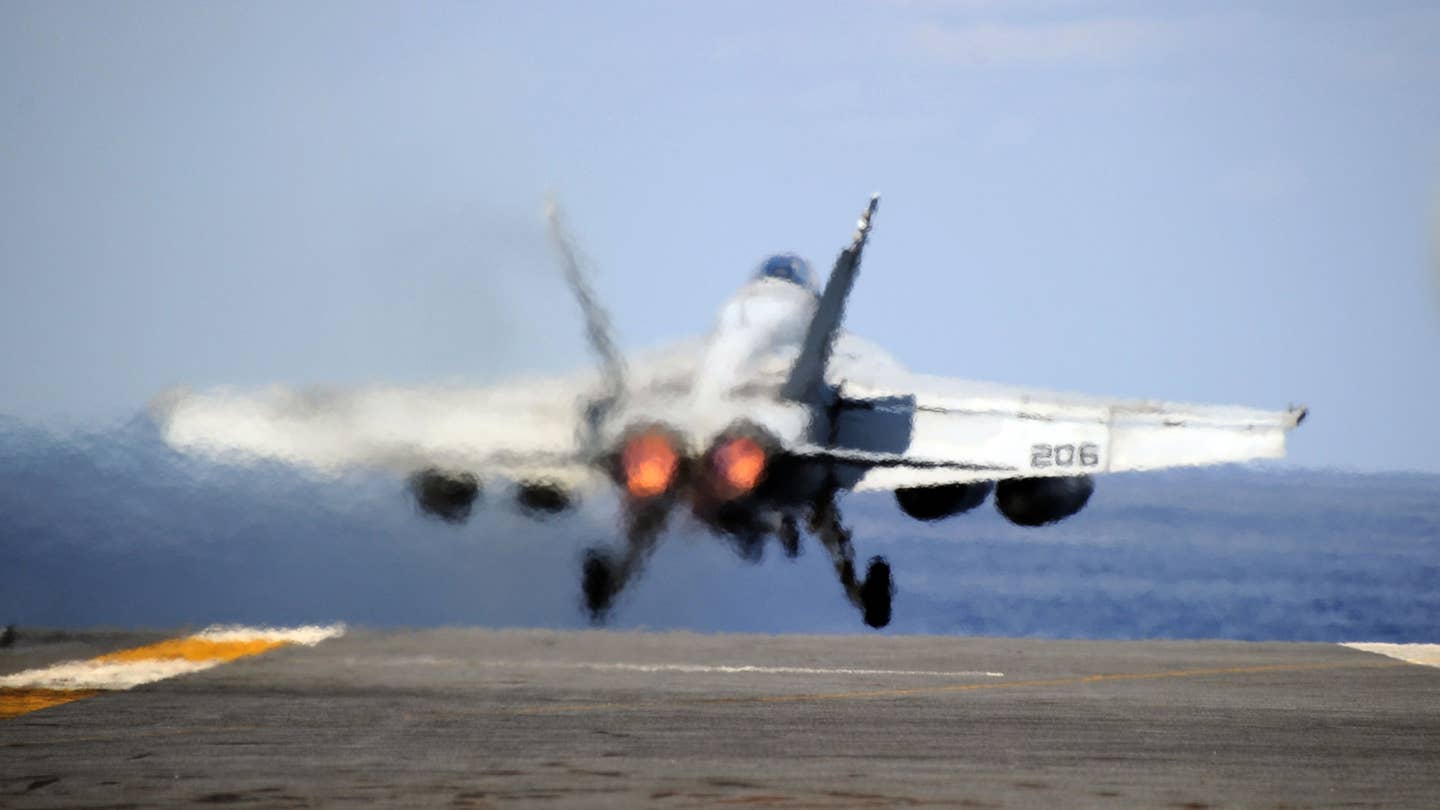70 Percent of the U.S. Marines’ F/A-18 Fighter Jets Can’t Fly
Budget cutbacks and heavy use have left hundreds of fighter jets in poor shape.

The United States Marine Corps boasts 276 F/A-18 fighter jets in its inventory, but fewer than 100 of them are flight-worthy, according to the Marines. The reason? Blame an unfortunate serendipity of budget cuts, personnel losses, and 15 years of steady combat operations.
Marine Corps statistics report that only around 30 percent of the Corps' F/A-18s are flight-worthy, according to a recent report from Fox News. Likewise, a similar percentage of the Marines' 147 CH-53E Super Stallion helicopters are relegated to terra firma. That's far worse than the levels considered unacceptable even a year ago, when Lt. General Jon Davis, commander of Marine aviation, declared that having 19 percent of his air fleet stuck on the ground was "way too high."
“Our aviation readiness is really my number one concern,” General Robert Neller, commandant of the Marine Corps, told Congress in April. “We don’t have enough airplanes that we would call ‘ready basic aircraft.'"
Many of the planes that have been grounded have since been torn apart in order to fix other operating aircraft. The military budget cuts caused by sequestration have resulted in less money available for new parts, forcing maintenance crews to seek out unorthodox, even cannibalistic methods of finding replacement pieces when things break. In one case, Marines pulled a landing gear bay door off of a retired plane parked on the USS Yorktown, an aircraft carrier converted to a museum ship in 1975.
Budget cuts have also contributed to the Marine Corps' downsizing over the last few years. Since 2010, more than 30,000 Marines have left without being replaced—many of them senior mechanics and skilled technicians who left the Corps for better-paying jobs in the private sector.
The planes have been in more or less constant combat rotation since shortly after 9/11, when the jets were called into battle over Afghanistan as part of Operation Enduring Freedom. Between that conflict, the Iraq War, operations in Libya and the current fight against ISIS, the planes and choppers are feeling the strain of all those years of hard use.
"The biggest thing is right now after 15 years of hard service, of hard fighting and deploying around the world, is we don't have enough airplanes on the flight line,” General Davis said.
Colonel Sean Salene, who oversees several helicopter squadrons at North Carolina's Marine Corps Air Station New River, was equally blunt. “Unlike previous wars, we did not have a period of time afterwards where we did not have tasking,” he told Fox. “There was no time to catch our breath.”
